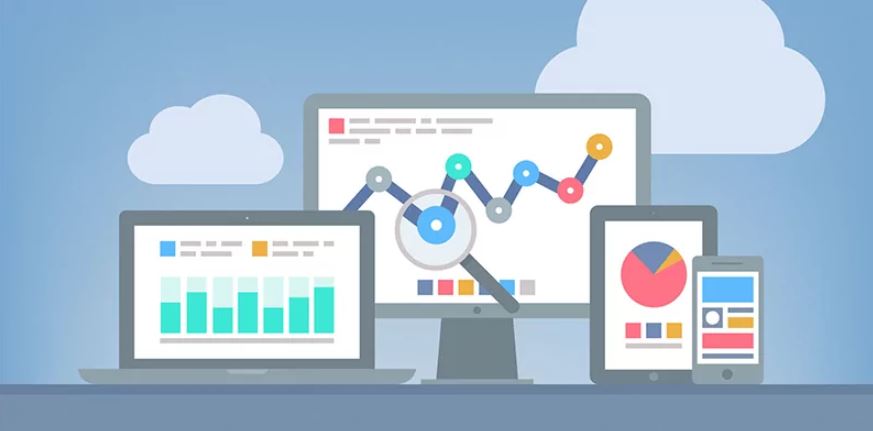Jumping into the world of investing can feel like wading through a maze of complex tools, each more daunting than the last. But what if I told you that mastering the Top 10 financial market analysis tools for beginners doesn’t have to be a Herculean task? That’s right, with the right set of instruments at your fingertips, you can slice through financial data like a hot knife through butter, making informed decisions without the migraine. Whether you’re itching to understand the ins and outs of your first trade or you’re setting sights on a blossoming portfolio, the market is brimming with user-friendly platforms and software that won’t leave you in a tangle. Think real-time data, simulators, and portfolio management—all built for the investing freshman. Ready to take the reins? Let’s unlock these tools and transform you from a market newbie to a confident investor, all without breaking a sweat or the bank.
Understanding the Basics of Investment Analysis Tools
The Importance of User-Friendly Financial Charting Tools
Let’s talk charts, friends! Charts help us see market trends with our own eyes. Think of them like maps that guide us through the ups and downs of the stock world. For newbies, the key is finding charting tools that don’t make your head spin. User-friendly means simple to use. You don’t need a finance degree to understand good charts.
What are the best charting tools for new investors? Look for ones that let you spot price moves easily. You want to see lines that go up when prices rise and down when they fall. If you’re new, start with basic line and bar charts. They show how prices move over time, clear and simple.
Some tools even use colors, so you can tell at a glance if the market had a good or bad day. Green usually means the price went up, and red means it went down. Easy, right? Check out these user-friendly financial charting tools to make sense of all those numbers.
Choosing the Right Beginner Trading Platforms
Now let’s step into the world of trading platforms. These are like your command centers for buying and selling stocks. But don’t worry, beginner trading platforms are made for those just starting out. They should be as easy as playing an online game!
What should you look for in a platform? You need one that’s simple to navigate. You don’t want to get lost looking for the buy button! It should also have clear info about the stocks you’re watching or buying. Plus, it should let you practice with fake money first. This is called a paper trading account. It’s like a playground where you can learn without risking real cash.
Another must-have is good support. If you get stuck, you want someone to help you out fast. Not all beginner trading platforms have the same tools or features, so pick one that fits your style.
Take your time to learn the ropes. You don’t have to rush. Successful investing is like a slow-cooked meal, not fast food. The goal is to feel confident when you’re ready to use real money. Remember, starting small and simple is the best way to grow big and smart.
Essential Features of Market Analysis Software for Beginners
Real-Time Market Data and What It Means for New Investors
Real-time market data is key for you. It shows live prices and trade info. You can see how stocks move and react. This means you’ll make choices based on fresh info, not old news.
But why is this important? When you have the latest numbers, you can act fast. You buy or sell at the right times. Plus, watching live data teaches patterns. You’ll start to see how news, time, and other things change stock prices.
Now, where do you get this data? Many beginner trading platforms give you real-time data. They show you charts, prices, and often news too. Remember, some tools may delay data. You want the ones that don’t.
Leveraging Free Financial Analysis Instruments for Effective Learning
Starting off, you don’t want to spend much. Good news! There are free financial analysis instruments perfect for you. These tools help you learn without losing cash.
What free tools can you begin with? Look for user-friendly financial charting tools. They help you see price patterns. Then, try out educational trading simulators. They let you practice with pretend money. Also, use beginner-friendly stock screeners. They sort stocks by what you’re looking for.
And don’t forget about easy-to-use economic calendars. They show you when big news might hit. Big news can mean big price moves.
Now how can you use these free tools? Use them as a sandbox. Try different ideas and see what the result is. No risk! Pair these with beginner guides to market analytics for best results.
With these tools, you start to build skills. It’s like learning to ride a bike with training wheels. You get the feel for it. Then, when you’re ready, you move on to bigger tools. But for now, use these free tools to grow your know-how.
Remember, the goal is to learn without stress. Then, when you’re ready, take off the training wheels. You can start using more professional tools. But for now, enjoy the journey of learning. Discover what investment style suits you best. Happy investing!
Building Your Investment Toolkit: Practical Applications
Utilizing Educational Trading Simulators for Hands-On Experience
You’ve heard the term “practice makes perfect,” right? This is true when you start investing. Let’s talk about educational trading simulators. They are like video games for investing! You get fake money to trade in real markets. This way, you can learn without losing any real cash. Check out simulators like Investopedia’s Stock Simulator which connect you with a world of trading.
So, what’s the best part? You can try out different strategies. See what works and what doesn’t. Plus, you can get used to how markets move. That too, without any stress. You’ll get to know terms like ‘buy’, ‘sell’, and ‘hold’. It’s a safe space where messing up is okay.
Portfolio Management Systems Tailored for Newbies
Now, let’s move on to portfolio management systems. What are these, you ask? Imagine a tool that keeps all your investments in one place. It tells you how they are doing, all in real time. For beginners, simple is best. You don’t want something too complex.
Some systems also give advice. They can suggest when to buy more or sell off. They tell you about risks. And they help you not to put all your eggs in one basket. This is called asset allocation. It’s very important.
A great example is Mint. It’s easy to use and helps track your personal finances too. You’ll see how much you are saving and spending. This is key for investing. You need to know how much money you can put into stocks, right?
Remember, hands-on experience is invaluable. Simulators and management systems are perfect for learning. You can’t learn to swim without getting in the water. The same goes for investing. Dive in, but let these tools be your floaties!
Advancing Your Investment Strategies with Sophisticated Tools
Incorporating Risk Management Tools into Beginner Portfolios
Risk is a big word in investing. All starters must learn to handle it. First off, it’s key to use risk management tools. These tools help you avoid losing money. They guide you on how much to invest. This prevents big losses. Start with what feels safe. Small steps lead to big gains.
Beginners love entry-level tools. They’re built for easy use. There’s no need to feel lost. These risk tools blend well with beginner trading platforms. So you start strong, without fear. They show red flags in your picks. This tells you when to be careful. It’s investing with a safety net.
Diving into Equity and Bond Market Analysis through Simplicity
Now, let’s talk stocks and bonds. These are parts of many investment plans. Equity sounds fancy, but it just means stocks. Knowing when to buy and sell is crucial. That’s where market trend identification comes in. It looks for patterns in stock prices. Fields of green and red will point the way.
Bond market analysis sounds tough. Yet, it’s just checking how bond prices move. Starting investors can use simple tools for this. These tools paint a clear picture. You see risks and chances in bond prices. You’ll get it with a little practice. Take your time.
Software today is your friend. It has easy buttons and alerts. No need to dig through hard data. Quick tips help you see opportunities. They also alert you to danger. This keeps your money safer.
Educational simulators are fun. They let you play without real money. Think of it like a video game for investing. You’ll learn how stocks rise and fall. It prepares you for the real deal. And you can try out what you learned. No risk, just learning and fun.
Accessible market scanners are here to help. They spot hot stocks in no time. This means less guessing for you. And beginner-friendly stock screeners work the same. They filter out the noise. You get a clean list of stocks to watch.
But remember, all this is just the start. Use these tools to build your investor smarts. They’re here to make your journey smoother. Play with them. Learn from them. They’re your ticket to grow your cash. And always keep learning more. Your future self will thank you.
Remember, what matters most is your growth. Like a tree, you’ll start small. But with time, you’ll stand tall. Keep at it, and watch your money grow.
In this post, we dove into the world of investment analysis tools, stressing how critical user-friendly financial charting tools and beginner trading platforms are. We explored the key features of market analysis software, including the power of real-time market data and how free financial analysis instruments can boost learning.
We also tackled practical steps to build your investment toolkit, like using trading simulators and beginner-friendly portfolio management systems. Finally, we discussed advancing your strategies with sophisticated tools, incorporating risk management, and simplifying equity and bond market analysis.
My final take: Start simple, learn the ropes, and embrace tools that grow with your skills. Keep it smart, keep it savvy, and here’s to your investing success!
Q&A :
What are the best financial market analysis tools for beginners?
There’s a great selection of tools designed to help beginners analyze financial markets with ease. Among the top recommendations are:
- TradingView: Known for its powerful charting and social networking features, TradingView caters to both new and experienced users with its intuitive interface.
- Yahoo Finance: Offers comprehensive data on stocks, including news, financial reports, and portfolio management resources, making it ideal for newbies to get a grasp on market movements.
- MetaTrader 4/5: Preferred by many for currency market analyses, these platforms provide user-friendly interfaces and are well-suited for beginners.
- Finviz: Focuses on delivering an array of visual tools like stock screeners, heatmaps, and charts to help beginners identify market trends and patterns.
- Investing.com: Equipped with live quotes, charts, news updates, and analysis across various asset classes, this tool is highly informative for novice investors.
Can beginners use financial market analysis tools effectively?
Absolutely! Many financial market analysis tools are designed with the beginner in mind, featuring user-friendly interfaces and comprehensive tutorials. Starting with more straightforward tools and gradually exploring features as they become more comfortable with the basics is an excellent way for beginners to build their analysis skills.
What features should beginners look for in financial market analysis tools?
Beginners should look for:
- Ease of Use: Interfaces that are clean and intuitive.
- Educational Resources: Tools that come with tutorials, guides, or customer support to help them understand the financial markets.
- Customizable Alerts: Notifications that can be set up for price movements or news events.
- Demo Accounts: To practice strategies without financial risk.
- Community and Support: Platforms with active communities or forums where beginners can learn from more seasoned traders.
How important is it for beginners to use demo accounts in financial analysis tools?
Demo accounts are incredibly important for beginners—they offer a risk-free environment to practice trades and analysis strategies. By using virtual funds, beginners can get a feel for the market’s dynamics and test out tools without the fear of losing real money, which can be a critical step in the learning process.
Are there any free financial market analysis tools suitable for beginners?
Yes, there are several free tools that are quite suitable for beginners. For instance:
- TradingView: Offers a free basic plan that includes some of the best charting capabilities.
- Yahoo Finance: Provides free access to stock information, including charts and data.
- Investing.com: Free access to charts, news, and data.
These tools give beginners a chance to get started with market analysis without any initial investment. However, beginners should be aware that more advanced features might require a subscription.






